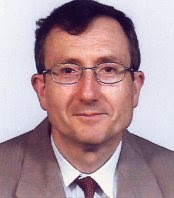The Global Brain I believe that "we could build a real ‘World Encyclopedia’ with a true ‘planetary memory for all mankind’…
...knitting all the intellectual workers of the world through a common interest".
"50% of the brain cells are killed off through apoptosis in the first year of life. Those which don’t match the challenges in the baby’s environment are the ones to go. It is the principle of “to him who hath it shall be given, from he who hath not even what he hath shall be taken away” at work".
"Later in adulthood, studies have shown that at any time point a proportion of our brain is *dormant* (“under-exercised” may be preferable) whilst the other is machining away — depending on the task at hand. For example, if we’re reading Candide by Voltaire in French we access our left hemisphere and if we’re making a mathematical estimate we access our right lobes".
Academic research postulates we are using only 10% of our brain processing power and others contradict this postulation:
http://www.sciam.com/article.cfm?id=people-only-use-10-percent-of-brain
"It may be possible that this C-model of consciousness may help us to locate where consciousness actually resides (physically) in the brain. Over time, neuroscientists have isolated specific areas in our lobes and cortex which govern our ability to communicate; information travels in via our primary auditory and visual cortex to the posterior speech zone. This zone encompasses the Wernicke area and from there the signals traverse towards Broca's area before reaching the primary motor cortex which allows us to say the words we read aloud. Likewise, there are zones in our brains which are command/control nodes to enable us to articulate our physiological movements, e.g. blink our eyes, raise our arms. Meanwhile our creativity has been established by neuroscientists to derive mostly in the right hemisphere of our brains; this is explained in Robert J. Sternberg's book, Handbook of Creativity".
More:http://knol.google.com/k/the-global-brain-the-semantic-web-the-singularity-and-360-2020-consciousness-to#
"Next, our understanding of how culture affects our brains and the way in which it stores that knowledge as well as evolve with it has been commented upon in books such as Brain, Culture and the Human Spirit by James B. Ashbrook. With the collaboration element, the American Optometric Association has written about vision being the "collaboration between the eyes and the brain". There is also research from Gazzaniga et al from the University of California Davis on the Collaboration Between the Hemispheres of a Callosotomy Patient as well as Jacqueline Liederman's The Dynamics of Interhemispheric Collaboration and Hemispheric Control."
...knitting all the intellectual workers of the world through a common interest".
"50% of the brain cells are killed off through apoptosis in the first year of life. Those which don’t match the challenges in the baby’s environment are the ones to go. It is the principle of “to him who hath it shall be given, from he who hath not even what he hath shall be taken away” at work".
"Later in adulthood, studies have shown that at any time point a proportion of our brain is *dormant* (“under-exercised” may be preferable) whilst the other is machining away — depending on the task at hand. For example, if we’re reading Candide by Voltaire in French we access our left hemisphere and if we’re making a mathematical estimate we access our right lobes".
Academic research postulates we are using only 10% of our brain processing power and others contradict this postulation:
http://www.sciam.com/article.cfm?id=people-only-use-10-percent-of-brain
"It may be possible that this C-model of consciousness may help us to locate where consciousness actually resides (physically) in the brain. Over time, neuroscientists have isolated specific areas in our lobes and cortex which govern our ability to communicate; information travels in via our primary auditory and visual cortex to the posterior speech zone. This zone encompasses the Wernicke area and from there the signals traverse towards Broca's area before reaching the primary motor cortex which allows us to say the words we read aloud. Likewise, there are zones in our brains which are command/control nodes to enable us to articulate our physiological movements, e.g. blink our eyes, raise our arms. Meanwhile our creativity has been established by neuroscientists to derive mostly in the right hemisphere of our brains; this is explained in Robert J. Sternberg's book, Handbook of Creativity".
More:http://knol.google.com/k/the-global-brain-the-semantic-web-the-singularity-and-360-2020-consciousness-to#
"Next, our understanding of how culture affects our brains and the way in which it stores that knowledge as well as evolve with it has been commented upon in books such as Brain, Culture and the Human Spirit by James B. Ashbrook. With the collaboration element, the American Optometric Association has written about vision being the "collaboration between the eyes and the brain". There is also research from Gazzaniga et al from the University of California Davis on the Collaboration Between the Hemispheres of a Callosotomy Patient as well as Jacqueline Liederman's The Dynamics of Interhemispheric Collaboration and Hemispheric Control."
Social media: 40 herramientas
Inteligencias Múltiples en la práctica docente:
http://www.youtube.com/watch?v=0oM2FMqP9QI
Intel·ligències Múltiples: Projecte: "L'aigua" 2005 AA Bastante bueno Trabajos alumnos Lourdes





No comments:
Post a Comment